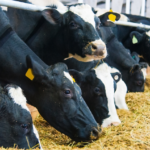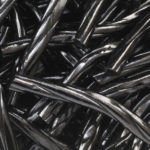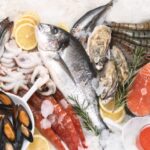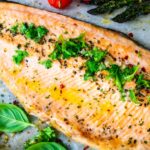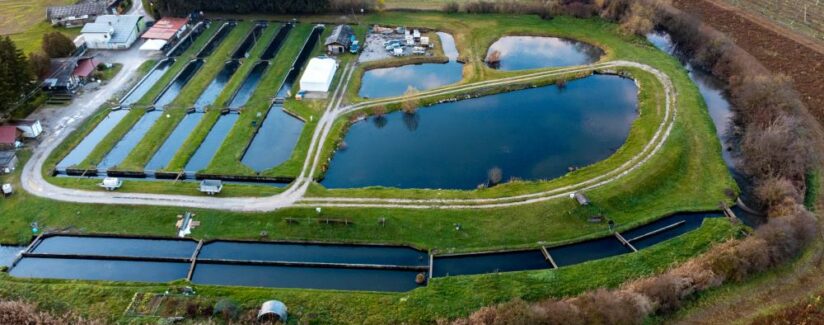
Is Aquaculture a Sustainable Way to Produce Fish and Seafood?
Many types of fish and seafood available in retail stores and restaurants are raised through aquaculture, sometimes called fish farming. One question we have heard: Is aquaculture a sustainable way to raise protein?
We turned to two leading experts to get answers to our questions. Dr. Jacob Bledsoe is an Assistant Professor & Aquaculture Extension Specialist in the Department of Animal, Veterinary & Food Sciences and Aquaculture Research Institute at the University of Idaho. Dr. Deborah Bouchard is the Director of the University of Maine’s Aquaculture Research Institute and an Associate Professor of Aquatic Animal Health with UMaine’s Cooperative Extension.
How do you describe aquaculture?
Dr. Bledsoe: Aquaculture today is not just about farming fish; it’s about leveraging advanced technologies and practices aimed at sustainable food production and reduction of environmental impact. This industry is at the forefront of addressing global food security, offering a sustainable, healthy protein source to meet the world’s growing food demand. From grassroots, small-scale fish farms and aquaponic operations to larger scale production, modern aquaculture contributes significantly by providing a source of healthy and nutritious food options.
Dr. Bouchard: Aquaculture is the farming of anything in water instead of using land. This could be fresh water, salt water, brackish water and water-based on land in tanks or directly in a marine or freshwater environment. Aquaculture is a diverse industry – it goes way beyond fish, including seaweed and shellfish – each with different environmental needs and management needs.
Why are fish raised on farms? Aren’t there enough fish in the lakes and oceans?
Dr. Bledsoe: Fish are raised on farms to supplement the decreasing supply of wild fish, which have been declining in many areas due to overfishing and environmental changes. When done correctly, farming of fish also allows for more controlled and sustainable production, while offering improved product traceability. In addition to food-fish farming, many local, state and federal governments also raise fish in controlled hatcheries to be directly supplemented to the wild as a conservation effort to maintain and recover threatened wild fish populations.
Dr. Bouchard: Aquaculture speaks to a growing need to provide accessible protein for a growing human population, where arable land is at a premium and the oceans and rivers provide a platform that has been underused to grow food. Used in conjunction with wild fisheries, fish raised on farms can meet the increasing demand for seafood without overexploiting wild fish populations. While it may seem that the ocean is abundant with fish, some wild fish stocks are depleted due to a changing climate, overfishing, habitat destruction and pollution.
How does aquaculture affect wild fish populations?
Dr. Bledsoe: Aquaculture, when conducted properly, has the greatest potential to reduce the fishing pressure on wild fish populations, which have been declining, sometimes rapidly, due to overfishing. However, concerns regarding genetic intermingling and disease transfer between farmed and wild fish are valid. To address these issues, regulations mandate that commercial fish farms implement strict measures to prevent the escape of farmed fish into the wild, thereby safeguarding wild fish genetics. While aquaculture has faced challenges with mishaps in the past, these incidents have served as important learning opportunities. The sector has since made considerable advances in technology and management practices to mitigate interactions between farmed and wild populations. Key strategies for further reducing the impact on wild fish include selecting optimal locations for farms, enhancing disease management and treatment protocols, and using sterile or native species to align more closely with natural ecosystems. These efforts demonstrate the industry’s commitment to supporting global fish demand while protecting and preserving wild fish populations.
Dr. Bouchard: Responsible management practices, including maintaining biosecurity measures, using native and sterile species, and ensuring proper containment, can significantly reduce risks that might impact wild populations. Aquaculture can also take the pressure off wild populations by providing other incomes for coastal communities, being used for conservation efforts and, in some cases, providing habitat for juvenile fish.
Is aquaculture a sustainable option to produce food?
Dr. Bledsoe: Aquaculture, particularly when employing advanced, eco-friendly technologies and practices, is increasingly seen as a sustainable food production option. It provides a high-quality healthy protein option for consumers while minimizing environmental impacts, making it a key part of our future food security. In terms of sustainability, aquaculture holds some of the greenest solutions for food supply concerns. Aquaculture is distinguished by its efficient use of resources, notably exemplified by finfish and shellfish near 1:1 feed conversion ratio, signifying optimal growth for the amount of feed given. This efficiency, combined with high reproductive rates and the absence of methane emissions, positions aquaculture as a valuable food production system.
Dr. Bouchard: Aquaculture can contribute to food security, support coastal communities, improve water quality, provide climate resilience and, in some cases, mitigate greenhouse gas emissions and relieve pressure on wild fish stocks. As a food, fish is one of the most sustainable animal-based protein sources using less energy and water than conventional land-based animal farming.
How can aquaculture answer sustainability questions in the future?
Dr. Bledsoe: The cultivation of seaweed within aquaculture systems (aquaculture includes farming plants, too!) has emerged as a powerful tool in climate change mitigation, capable of absorbing greenhouse gases and contributing to carbon sequestration efforts. Beyond its environmental benefits, aquaculture produces some of the healthiest protein options, supporting healthy human diets. As we navigate the challenges of ensuring a sustainable global food supply, aquaculture’s role cannot be overstated, offering solutions that meet human nutritional needs and preserve the health of our ecosystems.
Dr. Bouchard: Aquaculture can be a part of the solution when it comes to environmental conservation needs. Aquaculture can help reduce the pressure on wild fish populations and help with restoration efforts and climate resilience, while also contributing to global food security. The practice of aquaculture, with a history spanning thousands of years, is dynamic and continuously evolving, but more public awareness and support for research and development are crucial for its sustainable growth.
Learn more about aquaculture and the impact on water supplies.
This content is sponsored by BestFoodFacts.org and United Soybean Board.























